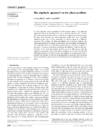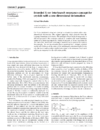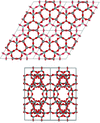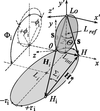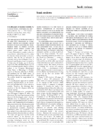issue contents
September 2005 issue

Cover illustration: An experimentally derived plot of the Fermi hole mobility function (FHMF) for urea. The FHMF can be interpreted as a potential energy surface for electron transfer. This plot was obtained from a Hartree-Fock wavefunction constrained to fit measured X-ray diffraction structure factors, using the Tonto program. See Jayatilaka & Grimwood [Acta Cryst. (2004), A60, 111-119].
topical reviews
 access
accessresearch papers
Graph-theoretical characterization of periodicity in crystallographic nets and other infinite graphs
 access
accessElectron crystallography of zeolites – the MWW family as a test of direct 3D structure determination
short communications
book reviews



 journal menu
journal menu











